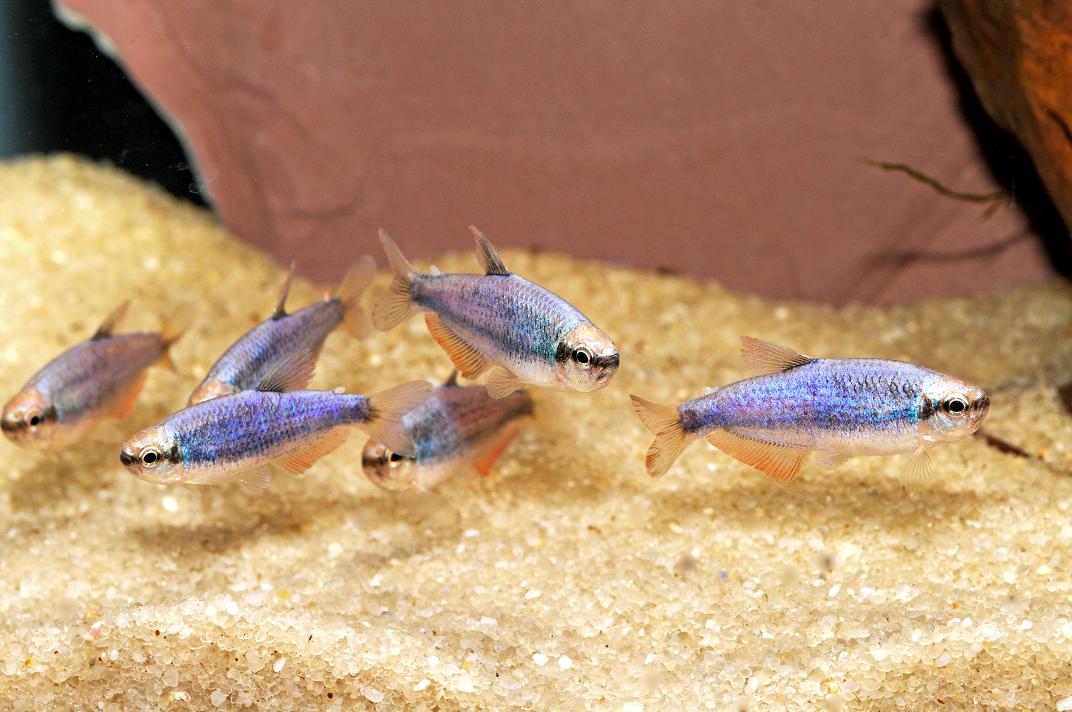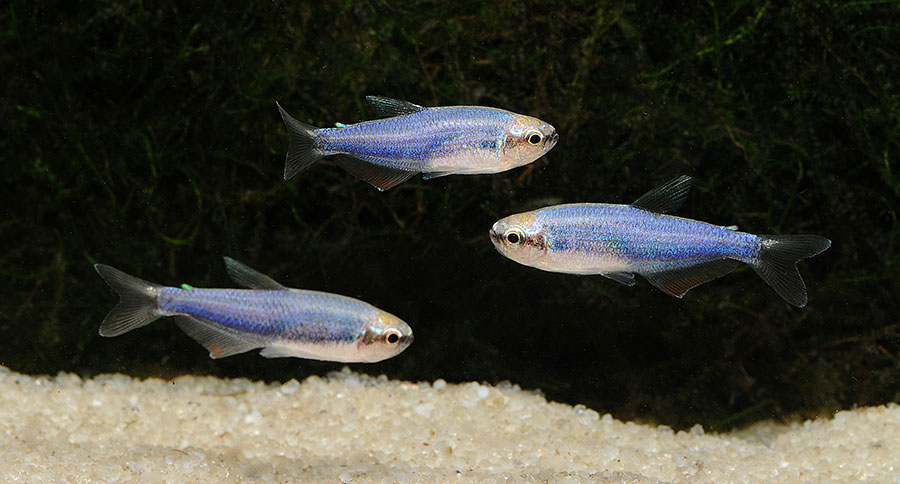
Often aquacultured, the Blue Kerri Tetra (Inpaichthys kerri) is a worthwhile fish to consider. These specimens are not considered the “Super Blue” strain, but do show more blue than the wild phenotype. Image credit: Mike Jacobs courtesy of Nautilus Wholesale.
Most of the time, wholesalers are keen to show off the newest and rarest fish in the trade. However, sometimes they take a step back and consider a fish that’s been around and is perhaps a bit underappreciated. The staff at Nautilus Tropical Fish Wholesale in Plant City, FL reminded us of just such a fish this week—the Royal or Blue Kerri Tetra, Inpaichthys kerri, which is available in both a wild form and a line-bred “Super Blue” cultivated strain.
A native of the Aripuanã River in the upper Madeira River basin, Mato Grosso, Brazil, the Blue Kerri Tetra stays small at a maximum size of just over 1″ (2.8 cm reported). They should not be kept singly, lest any antagonistic behaviors develop towards tankmates. Instead, start with a group; recommendations for minimums range anywhere between 6 to 12. This species may be easy to sex; the adipose fin of males is blue, while it is red in females. This detail might be obscured in some aquarium-bred strains where the blue coloration is enhanced, although females will remain stockier than male counterparts.
Juveniles are relatively bland in coloration so the fish seen at the LFS might be easily overlooked. But with the proper care, they will truly shine once they hit maturity.
The Insider’s Viewpoint
Says Sales Manager Joe Hiduke, “Blue Kerri Tetras are beautiful and peaceful; they make great community fish. Sometimes traded as ‘Blue Emperors’, ‘Purple Emperors’, ‘Blue Kings’ and even ‘Super Blue Kings’, they are in their own monotypic genus (Inpaichthys), and stay a fair bit smaller than standard Emperor Tetras (Nematobrycon palmer). Blue Kerri Tetras are usually offered as farm-raised fish and they’re not too picky about water parameters, but if you want to spawn them then you’ll need to provide soft acidic water.”
Regarding the variation in color between strains, Hiduke noted: “The ones I get from Sri Lanka are a lot more striped when I get them; I do get the super blues from the Czech Republic. These might be the bluest fish I get here, they’re incredible. Blue Kerri Tetras aren’t raised in Florida anymore that I’m aware of. All the Blue Kerris we offer at Nautilus are now are from Sri Lanka (with the occasional Czech Super Blues).”

Young “Super Blue” Kerri from Czech breeders. Image credit: Mike Jacobs courtesy of Nautilus Wholesale
How To Get Them
Blue Kerri Tetras aren’t an everyday offering, but they are around and will absolutely shine when given the appropriate conditions. Local fish shops interested in this recent batch of Kerri Tetras can reach Nautilus Tropical Fish Wholesale through their website at www.nautilusmarinewholesale.com.
Further Reading
Fishbase – https://www.fishbase.se/summary/12388
Seriously Fish – https://www.seriouslyfish.com/species/inpaichthys-kerri/




